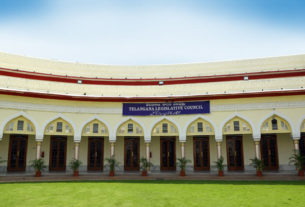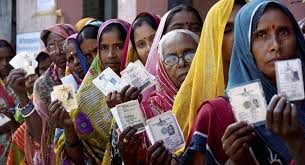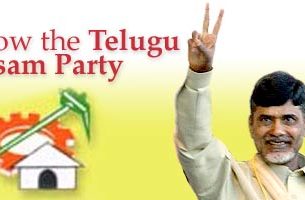By: Fatima Hasan
After the first three months into 2024, well, it is again election time. With this comes the time for people to elect the Prime Minister (that is, the ruling party) for running the country in the next 5 years. Among their preferences, the performance of the candidate also counts among the public in choosing their leaders. Precisely, it is the hour of evaluating the report card of the Modi Sarkar’s two terms in office.
A no-strong opposition is obviously a blatant favor as Modi’s Bharatiya Janata Party (BJP), ahead of the Lok Sabha polls, wrested control of Chhattisgarh and Rajasthan from Indian National Congress (INC) and was re-elected in Madhya Pradesh for a record fifth term in the Assembly polls. In Chhattisgarh, BJP won 54 out of the 90 seats while the Congress managed to get only 35. In Rajasthan, BJP bagged 115 out of 200 seats while Congress secured only 69 seats. In Madhya Pradesh, BJP secured second term with 163 seats out of 230 wherein Congress performed far below with 66 seats only.
Adding to the Hindutva tactic, a recent court ruling in Uttar Pradesh banned madrassas, the Islamic schools in the state. The move will affect around 25 lakh students and 10,000 teachers in about 25,000 madrassas. The court reasoned that the madrassas violate India’s constitutional secularism and ordered that students be moved to conventional schools.
This adds to the series of judicial pronouncements and the legislative and administrative measures taken by the BJP governments at the Centre and the States affecting the minorities, especially Muslims. Such actions are likely to impact the opinion of the 20 crore Muslims, the second largest religious group living in the country. The Muslim voters constitute an important segment of the electorate.
Among the major issues, poverty has shown a diminishing curve since 2014. The share of India’s population living in extreme poverty has fallen from 18.7 per cent in 2015 to 12 per cent in 2021, according to World Bank data. Between 2014 and 2022, the GDP grew at an average of 5.6 per cent in compound annual growth rate (CAGR) terms but it is still below the achievement during the period of 2000-2010. According to International Monetary fund 2024 GDP report, India’s GDP stands at 4.11 trillion US dollars, making it fifth largest economy in the world.
The inflation rate in India has shown a fluctuating trend ever since 2019 when Modi secured second term. Inflation touched as high as 7.59 percent in 2020 from a low of 3.73 percent in 2019. Currently, the inflation rate stands at 5.10 percent. Whereas the unemployment rate in India is ever increasing, from 5.27 in 2019 to the highest of eight percent in 2020 and 2023. The rate now has declined to 6.57 [January 2024 estimates]. As on date, as per the Poverty India statistics, the total number of people living in poverty is 8,30,68,597 including 3,77,67,473 males and 4,53,01,124 females.
According to the Centre for Monitoring Indian Economy, India’s unemployment rate in 2024 is 7.70 percent. In Urban India, it is 8.60 percent whereas in Rural India, it is 7.30 percent. Introduction of GST (Goods and Services Tax) was one of the bold steps taken by this government. There has been a surge in GST revenues, with the tax collection totalling Rs 1,68,337 crore in February 2024, marking a year-on-year growth of 123 percent.
However, many issues affecting the people are brushed aside in the media. According to the Reporters Without Borders [RWB], India’s press ranking dropped to 161 in 2023. The main reason was the crackdown on free expressions by media houses and journalists.
Some things can downplay Modi in this election
Since January this year, the Central government has initiated crackdowns on several political party leaders through enforcement agencies on charges of money laundering and corruption. These include the arrest of Delhi Chief Minister Arvind Kejriwal and the freezing of bank accounts of the Congress party in a tax case dating back to 2018-2019. The growing crackdown clearly shows the authorities’ blatant disregard for human rights and rule of law, observes Aakar Patel, chairman of the board at Amnesty International India.
The construction of Ram temple at Ayodhya is also likely to have some impact on this election. Keeping its promise of implementing Uniform Civil Code, BJP-ruled Uttarakhand passed UCC law on 7th February 2024 to replace the customary laws governing marriage, divorce, adoption and inheritance among different communities. Other BJP-ruled states are also contemplating to pass similar laws soon.
As soon as Modi secured the second term, the Parliament passed the Bill outlawing Triple Talaq among Muslims. After getting re-elected, the Prime Minister also took the decision to revoke Article 370 which provided special status to Jammu & Kashmir. The temple rows being revived in several states by seeking court interventions are also likely to impact the Muslims in the country. All these are a few setbacks for Modi 3.0.
With its sets of pros and cons, the upcoming elections– scheduled from 19th April to 1st June in 7 phases– will either make or break Modi. The past trends suggest that voters have always likened change in the government every term or at least after every two terms. Having seen Modi in the top position for a decade, the people can choose the INDI alliance if they want change. However, in the absence of a strong, formidable alliance of the Congress and other regional parties, the elections are titled towards BJP again. Anyway, let the people decide.
(eom)


